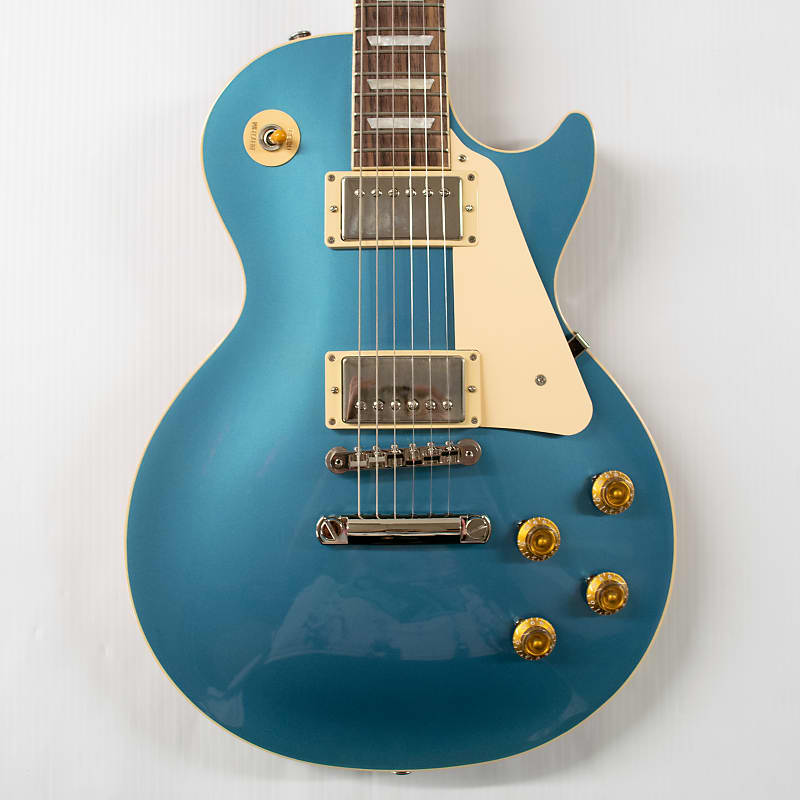The History of Guitar
The Fascinating History of the Guitar: From Ancient Origins to Modern Mastery
The guitar is one of the world’s most cherished instruments, known for its versatility and the emotions it can evoke. From classical symphonies to rock ballads, the guitar has made its mark in nearly every genre of music. But behind the music lies an incredible history of the guitar, a story that’s just as rich and diverse as the sounds it produces. In this article, we’ll take a journey through guitar history, tracing its roots, evolution, and lasting cultural significance. Whether you're a player, a fan, or simply curious about the instrument, this look at the guitar's past will leave you with a newfound appreciation.
Ancient Origins: The Roots of the Guitar
The history of the guitar stretches back thousands of years. Although the modern guitar as we know it has only been around for a few centuries, its ancestors can be found in ancient civilizations. Early stringed instruments, resembling the guitar, appeared in various cultures across the world.
The Lute and Ancient Instruments
The origins of the guitar trace back to ancient Mesopotamia around 3000 BCE. Instruments like the oud and the lute are considered direct ancestors. These early instruments had a body and neck, much like today’s guitar, and were plucked to produce sound. The oud, particularly popular in the Middle East, made its way to Europe through Spain during the Moorish rule, laying the groundwork for European stringed instruments.

The lute, favored in medieval and Renaissance music, was a crucial step in guitar history. With its rounded back, frets, and neck, the lute served composers and musicians well, providing a delicate sound suited for more intimate performances. Its smaller size and ability to be played with both fingers or a plectrum allowed it to capture audiences in salons and courts across Europe.

The Vihuela: A Key Step in Guitar History
By the 15th and 16th centuries in Spain, the vihuela became the instrument of choice. Similar to the modern guitar in having a flat back, the vihuela was tuned like a lute. It was an important development that helped shape what the guitar would eventually become. Unlike the lute, the vihuela's flat body gave it a distinct sound, making it an essential part of the history of the guitar.

The vihuela's popularity in Spain marks a critical divergence in guitar development from other stringed instruments. While the vihuela eventually fell out of favor, it laid the foundation for the guitar’s future evolution.
The Birth of the Classical Guitar
By the 17th century, the history of the guitar began to resemble the instrument we know today. Spain, once again, was at the forefront of guitar development.
The Baroque Guitar
In the 1600s, the Baroque guitar became widely popular in Spain and Italy. Featuring five courses of paired strings (usually tuned in unison or octaves), this guitar was a favorite for both classical and popular music. Its lighter design made it a go-to instrument for traveling musicians, and it was commonly used to accompany singers and dancers.

This era of guitar history introduced a design more similar to today’s instruments, with a body made from thin wood, a flat back, and a longer neck. While tunings varied, the basic interval system used for the Baroque guitar is similar to what we find in modern guitars.
Antonio de Torres and the Classical Guitar Revolution
The most important shift in guitar history came in the 19th century, when Spanish luthier Antonio de Torres Jurado revolutionized the guitar's design. Often referred to as the father of the modern classical guitar, Torres introduced several key changes: he increased the body size, standardized its shape, and refined the internal bracing system to enhance resonance and volume.
Torres' designs included six single strings, which became the standard for modern guitars. These modifications allowed the guitar to project more sound, making it suitable for solo performances in larger venues. His influence on guitar history is profound, with nearly every classical guitar built since the 1800s drawing from his designs.

The Evolution of the Acoustic Guitar
As the history of guitar entered the 20th century, the acoustic guitar continued to evolve, particularly in the United States. One of the most notable figures in this period was C.F. Martin, who founded Martin Guitars in 1833.
Martin Guitars and the Steel-String Acoustic
C.F. Martin’s introduction of the steel-string guitar was a pivotal moment in guitar history. By using metal strings instead of gut or nylon, Martin's guitars produced a louder, brighter sound, making them ideal for larger venues and new genres like folk, country, and blues.

Martin also introduced the X-bracing system, which allowed the guitar’s body to withstand the tension from steel strings without warping. This innovation helped solidify the steel-string acoustic guitar as a favorite across multiple genres, from bluegrass to pop.
Gibson and the Archtop Guitar
Another key innovation came from Gibson, which introduced the archtop guitar in the early 20th century. Modeled after violins, the archtop guitar had a curved top and back, producing a more percussive sound. It became a mainstay in jazz, and to this day, it remains an iconic instrument in that genre.

The Birth of the Electric Guitar
The 1930s marked a groundbreaking shift in guitar history with the invention of the electric guitar. The ability to amplify sound transformed the guitar, allowing it to take center stage in new musical genres like rock and roll. But who invented the electric guitar? This question has multiple answers.
The First Electric Guitars
Early electric guitars were hollow-body instruments with pickups designed to amplify string vibrations. Pioneers like Les Paul and Leo Fender played key roles in developing the solid-body electric guitar, which helped eliminate the feedback issues associated with hollow designs.
When was the electric guitar invented? The first commercially successful electric guitar was the Rickenbacker "Frying Pan", invented by George Beauchamp and Adolph Rickenbacker in the early 1930s. However, Les Paul’s refinement of the solid-body design brought the electric guitar to new heights in the 1950s.

The Les Paul Guitar and Its Legacy
In 1952, Gibson released the Les Paul model, which became iconic in the world of rock music. The history of the Les Paul guitar is intertwined with the rise of legendary musicians like Jimmy Page and Eric Clapton, and its influence on rock music is undeniable. Around the same time, Leo Fender introduced the Telecaster and Stratocaster, two guitars that remain staples in the music industry to this day.

The Electric Guitar in Popular Music
From the 1950s onwards, the electric guitar dominated popular music. Musicians like Jimi Hendrix and Eddie Van Halen pushed the instrument to its limits, experimenting with effects, feedback, and new playing techniques. The history of the electric guitar is a story of innovation, as players continually pushed the boundaries of what was possible.

The Rise of Digital Guitars and Guitar Synthesizers
The 21st century has seen the guitar evolve in ways that would have been unimaginable just decades ago. The rise of digital guitars and guitar synthesizers has expanded what the guitar can do, allowing players to recreate sounds from other instruments or generate entirely new ones.
Brands like Line 6 and Boss have been instrumental in this shift, creating processors and multi-effects pedals that give guitarists endless sonic possibilities. Modeling amps and amp simulators now allow players to replicate the sounds of classic amplifiers without needing the physical equipment, making recording and live performances easier than ever.

As we reflect on the history of guitar, it’s clear that this instrument has been at the heart of musical innovation for centuries—and will continue to inspire musicians for generations to come.
The Acoustic Guitar Patent
The Acoustic Guitar Patent, filed in the 1960s, details an invention related to Gibson’s humbucking pickup, a crucial advancement in guitar technology. This innovation drastically reduced the hum and noise associated with earlier single-coil pickups, providing a cleaner and more powerful sound. This development played a key role in shaping the history of the guitar, particularly during the rise of rock and roll, and is still widely used today in various guitar models. It revolutionized how guitars sounded in live and studio settings.
Check out this design!
The Guitar Pickup Patent
The Guitar Pickup Patent, US2976755A, granted in 1961 to Leo Fender, covers an innovative design for an electric guitar bridge. This bridge allows for individual string intonation adjustments, ensuring more accurate tuning across the fretboard. Fender’s design played a significant role in the development of his iconic electric guitars, such as the Fender Stratocaster and Telecaster, and contributed to their lasting popularity. The ability to fine-tune each string revolutionized guitar performance, particularly for musicians seeking precise intonation in live and studio settings.
Check out this design!
The Electric Guitar Patent
The Electric Guitar Patent, US2714326A, granted to Theodore McCarty in 1955, is related to the invention of the vibrato tailpiece (commonly known as the Bigsby Vibrato). This mechanism allows guitarists to alter the pitch of notes by adjusting the tension of the strings, creating a "vibrato" effect. It had a significant impact on the history of electric guitars, enabling new playing styles and sonic possibilities. The Bigsby Vibrato became a popular addition to many electric guitars, influencing genres like rock and country.
Check out this design!
The Bass Guitar Patent
The Bass Guitar patent, USD169062S, granted in 1953 to Leo Fender, covers the ornamental design of the iconic Fender Telecaster guitar. The patent specifically outlines the aesthetic features of the solid-body electric guitar, which became one of the most influential designs in electric guitar history. Known for its minimalist design and versatility, the Telecaster helped define the sound of modern rock, country, and blues. Fender’s design has remained largely unchanged and continues to be a staple for musicians worldwide.
Check out this design!








